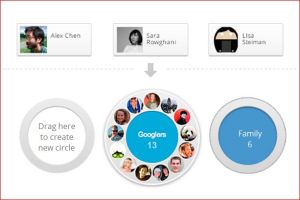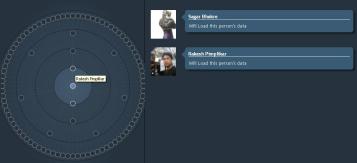Google+ Implements Our Hack! :)
It is a humble compliment to see how Yahoo!, Facebook and now Google have found the USP of our concept valuable.
FriendCircle was the winner of Yahoo! University Hackathon – HackU 2010 at IIT Bombay in October.
Yahoo! intended to use it in their products but we don’t really know how they’ve done it.
Facebook, in a few months had a small feature with a rather inconspicuous and not so convenient UI on their news feed settings which allowed the user to show more of <friend>.
Google, has recently released Google+ a new social networking platform with one of its USP based on Friend Circle. Though we have been a few steps ahead, they do seem to be heading in a similar direction:
Want to try out FriendCircle? Leave us a note.
-Manav
(on behalf of my HackU team:
Sumit Somani, Mayank Singhal and Gaurav Toshniwal)

This entry was posted on June 30, 2011 by Manav Kataria. It was filed under Technology and was tagged with Facebook, Friend Circle, Google, Google Plus, Hack U, Hackathon, IITB, Indian Institute of Technology Bombay, Social network service, User interface, Yahoo!.



I want to try FriendCircle
June 30, 2011 at 4:39 pm
Manav, the concept isn’t even close to that of your team.
Yours is a affinity-based mapping. This is a context-based mapping. Google+ is the concept of ‘direction’ of information rather than ‘reach’ of information.
Compare this more with fb lists… just that they gave a circle one can tinker with for a UI.
June 30, 2011 at 5:58 pm
Thanks for bringing this up Vibhu.
I understand your point of view and agree with the understanding of the model. We do have an affinity-based model, the intelligence within the system that segregates users.
However if you sort all your users into most common contexts of ‘haven’t met’, ‘acquaintances’, ‘friends’ and ‘family’ — it is similar to FriendCircle!
This is where these models merge.
But the context may not always be intersecting. Absolutely true, and in that case they are different.
Affinity based model is a social context. And for every independent context we could have an affinity based sorting model like FriendCircle.
From the Product Manager’s Perspective:
Every product here has a common objective — To provide the user with means to relevant feeds. We reduce clutter by sorting users into groups. Now how many users would manually sort all users into different groups? I have 800+ friends on Facebook. How many users on Facebook do it? What do they gain from it?
If circles are to be used for feeds, shouldn’t they be automatic?
Google+ Circle is a very good start. It helps you establish a context. And, it also helps Gmail throw better email suggestions at you, when you write your next mail! 😉
July 1, 2011 at 12:14 am